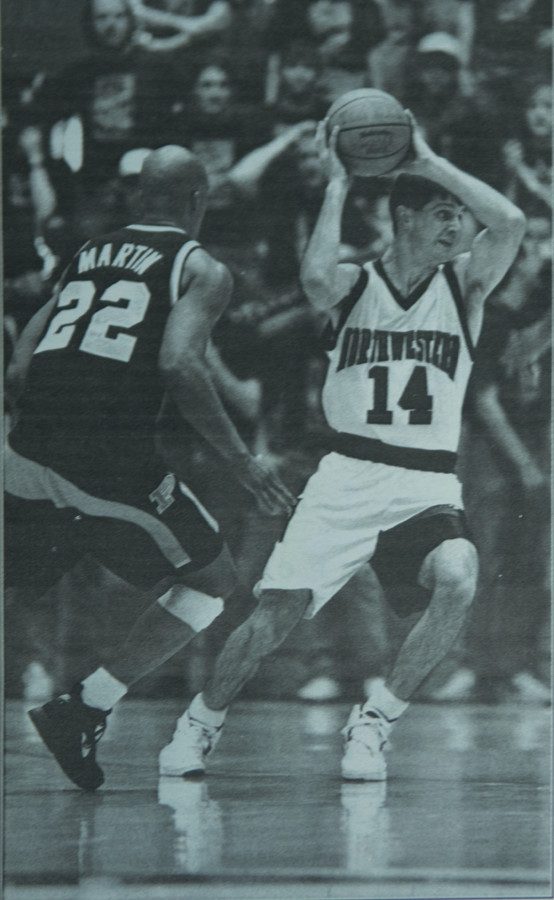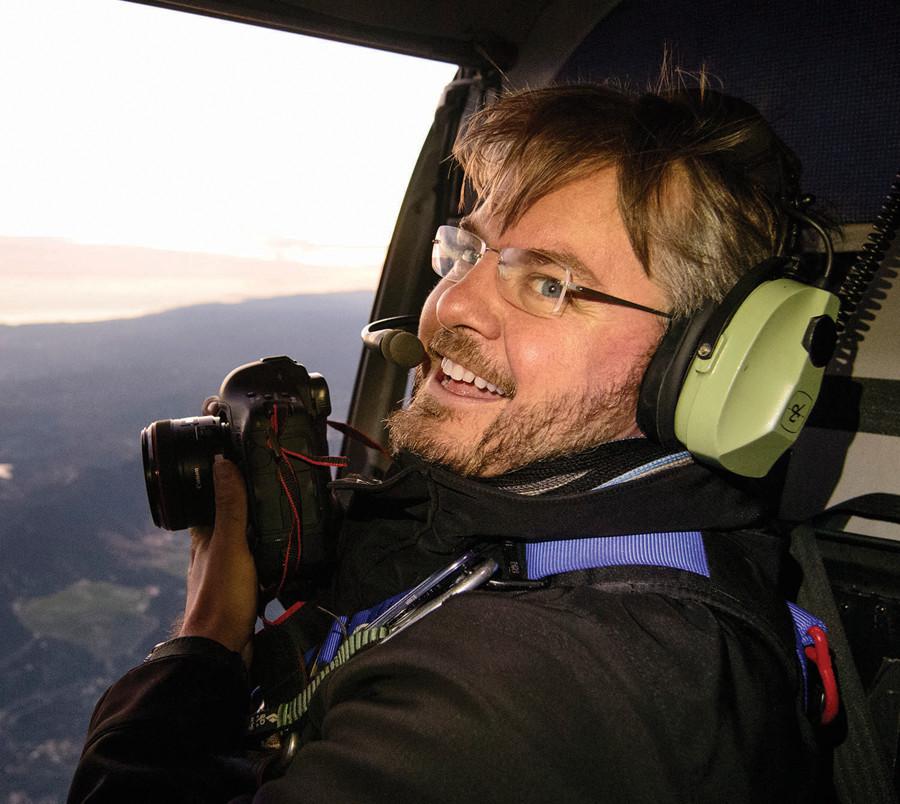Up in the air: Pulitzer Prize-winning alumnus releases second edition of photography book with aerial photos of major cities
April 21, 2016
A&E
Pulitzer Prize-winning photographer Vincent Laforet (Medill ‘97) started out his career on the third floor of Norris University Center as a photo editor for The Daily. About two decades later, Laforet was working from a helicopter flying 12,000 feet in the air.
Earlier this month, the second edition of Laforet’s first book, “AIR,” was released, featuring aerial photos of 10 major cities around the world.
“It’s a very literal book that documents what cities look like from an altitude you’ve never seen,” Laforet said. “I use the analogy of taking a step back in your life to get a better perspective. You’re able to see more details and get a better path.”
For “AIR,” Laforet traveled to cities such as Berlin, London and San Francisco, among others. In just a few months, he said he photographed each of the cities from his perch thousands of feet in the air.
In 2002, just five years after graduating, Laforet won a Pulitzer Prize for feature photography for his work in the Middle East for the The New York Times. In 2005 he was also named one of the “100 Most Influential People in Photography” by American Photo magazine.

September 21, 1993
Laforet said he first began working with a camera at age 15. He played around with his father’s camera and eventually began photographing weddings and bar mitzvahs — “everything that a young photographer does,” he said.
He joined The Daily his freshman year and served as photo editor Winter Quarter of his freshman year. Before he knew it, he was thrown into sports photography, traveling to the Rose Bowl with the Wildcats his sophomore year.
“I was never a big sports fan,” he said. “When I was a freshman, I never knew what a first down was.”
Laforet spent his Saturday nights processing photos from that day’s football game so he could leave the expected 30 to 40 prints on the sports editor’s desk the next day.

Because there was no specific photojournalism program during his time at NU, Laforet said he and his team of “photo geeks” that worked for The Daily fed off of each other’s knowledge and experience. Much of their growth was self-driven, he said.
“We were a rat pack where we were inventing things and going out to meet photographers and whoever would talk to us,” he said. “It was a great time to be at The Daily Northwestern.”
Laforet said although he considered himself a young editor, he took his job as photo editor very seriously. He said jokingly that reporters were often scared to go into his office.
However, his serious nature was a product of his dedication to quality photojournalism, said Peter Pawinski (Weinberg ‘98), Laforet’s assistant photo editor at The Daily. He was a technically demanding editor and refused to publish a photo that was even slightly out of focus, Pawinski said.

September 15, 1995
Pawinski said, even as a student, Laforet had the ability to tell a story in a single photo that captured people’s attention.
“Vince was great with technique and blending it with artistry,” he said. “He was a great craftsman. When he did that I wanted to start teaching myself and start learning from him.”
After leaving NU, Laforet covered seminal moments in history, from Hurricane Katrina to 9/11, for The New York Times.
In 2009, an assignment for Men’s Health magazine inspired him with the idea for “AIR,” Laforet said.
The assignment required him to illustrate an article with a single photo of New York City shot during the day at ground level. Laforet said he thought it would be more original to go higher and shoot the city at night from a helicopter.
After Laforet put the photos from the article up on Storehouse, an app for photo-sharing, he said they went viral. That’s when Laforet decided he wanted to turn this project into a series and eventually into a book.

Daily file photo
During his project, Laforet invited Pawinski to join him and his assistant in the helicopter when he was photographing Chicago, Pawinski said.
“When he started shooting aerials, he started shooting them in a way I’ve never seen before,” Pawinski said. “It was straight down, it wasn’t at an angle.”
In 2015, during the first three weeks of the book’s publication, the first edition of “AIR” had sold out. It is the most successful book the Press Syndication Group has published thus far, said the publishing group’s owner, Warren Winter.
“AIR” is a book that most people who have ever been on a plane ride can connect with, he said.
“You can imagine the cities and the people and the places,” Winter said. “Everyone likes to travel, everyone likes looking at the window below them. The more you step back the more you see how neighborhoods and people are connected.”
Laforet’s said his goal with “AIR” was to make the cities look like “synapses.” He initially made the connection between brain synapses and street lights in a cognitive science class at NU, he said. Throughout the project, he realized the gridlike structure of the lights also resembled computer chips, he added.
“When you’re above the city, you suddenly see the life emanating from all the lights,” he said. “It’s almost like you’re seeing the artery of the city, the light emanating with life. You feel like you’re a part of something greater.”
Email: [email protected]
Twitter: @emchin24
Photo source Dustin Snipes

